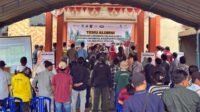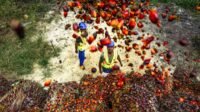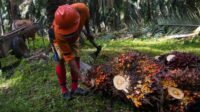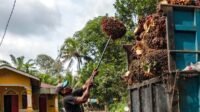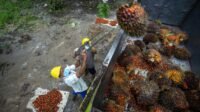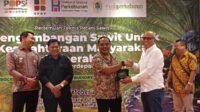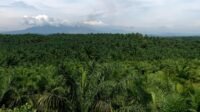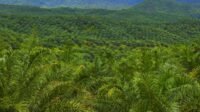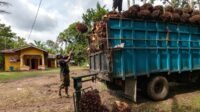PALMOILMAGAZINE, DEPOK — Behind the Indonesian government’s intensified efforts to regulate forest areas lies a long-standing legal tangle marked by overlapping regulations and unclear land status. Without comprehensive legal reform, policies like Presidential Regulation (Perpres) No. 5 of 2025 risk creating new crises for communities and businesses.
As the Forest Area Enforcement Task Force (Satgas PKH) pushes forward with implementation of the new Perpres, legal scholars are raising red flags. Sadino, a forestry law expert from Al Azhar University Indonesia, emphasized that Indonesia’s forest land problems go beyond mere legal violations—they stem from decades of regulatory overlap, weak spatial planning, and lack of legal certainty.
“Indonesia’s landmass spans 187 million hectares. Two-thirds are designated as forest areas, but from the beginning, boundaries between forest and non-forest zones were never clearly defined,” said Sadino during a legal discussion hosted by the Doctoral Program in Law at the University of Pancasila, attended by Palmoilmagazine.com in early May 2025.
Also Read: Palm Oil Tycoon Voluntarily Returns 500 Hectares to State, Hailed as Model of Legal Compliance
He pointed out that forest area designations dating back to the 1950s often clashed with administrative boundaries. While management in Java tends to be orderly under state forestry firm Perhutani, the situation is far more complex outside the island.
“There are 43 million hectares involved in land tenure conflicts, and about 32 million hectares of forest-designated land no longer have actual forest cover. Our concept of ‘forest’ is based on zoning, not vegetation. But forest function should be defined by its physical cover, not just its status on a map,” he said.
Sadino also revealed that many forest area designations were made without complete legal processes, such as proper demarcation and official establishment. As a result, communities—including participants of the government’s Aspekpir transmigration program who hold land certificates—find their lands suddenly claimed as forest areas.
“This isn’t just a bureaucratic overlap. It affects citizens’ rights. When legally certified land is classified as forest, it becomes a disaster—for communities and businesses alike. They lose access to financing because of the land’s uncertain legal status,” he stressed.
He warned that the Satgas PKH must proceed with caution. “The task force cannot operate with the same top-down approach as in the past. Verification must be rigorous—not based solely on indicative maps. If land is seized or assigned for joint use without clear legal status, it risks becoming a serious legal flaw.”
Sadino also urged a shift in perspective. He sees the Perpres as a major test: is it truly a step toward sustainability, or just a legal pretext for land appropriation?
“If change is truly the goal, forest governance must be rebuilt from the ground up with full legal certainty. In the name of protecting the environment, we must not undermine justice for people and businesses.”
Meanwhile, Professor Agus Surono of the University of Pancasila warned that Perpres No. 5 of 2025 may conflict with constitutional principles, the Omnibus Law on Job Creation, and several forestry regulations. (P2)






